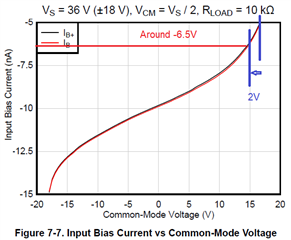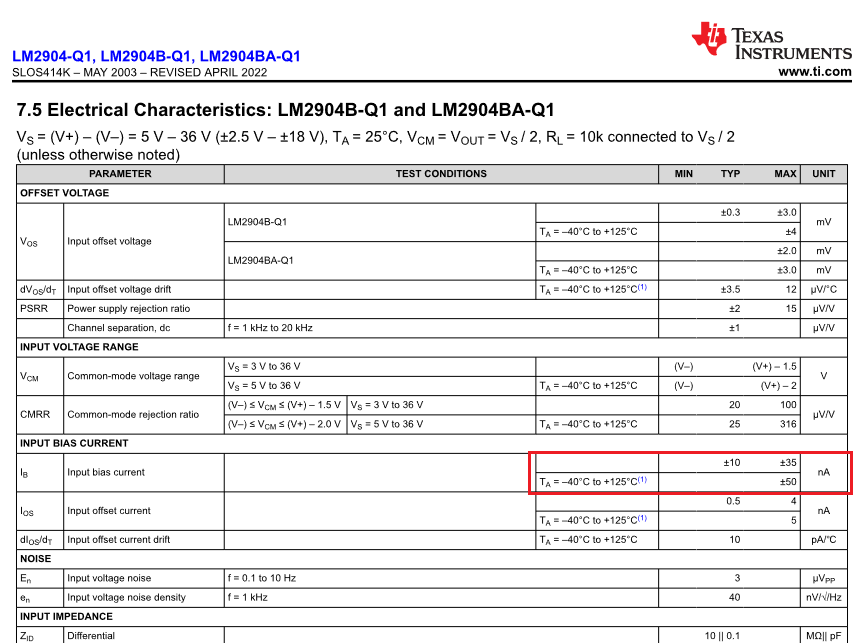Other Parts Discussed in Thread: LM2904, TLV9004
Hello GPAMP team,
I got one question from the customer about input bias current.
In the datasheet shows the typical performance of Ib with pointed condition. (Vs=±18V)
・Even though sweeping Vcm from -18V to +18V, the input bias currnent is same direction (pull-out from IC). Is that correct??
・If we need the same input bias currnent but Vcm from -7V to +7V (and Vcm is from -5V to +5V), I suppose like below.

★With above condition, the voltage difference is 7V - 5V = 2V
So that we can read the bias current (2V down from +18V) from graph curve, is that correct?
Regards,
Toshihisa Ishii in TIJ/East Auto



